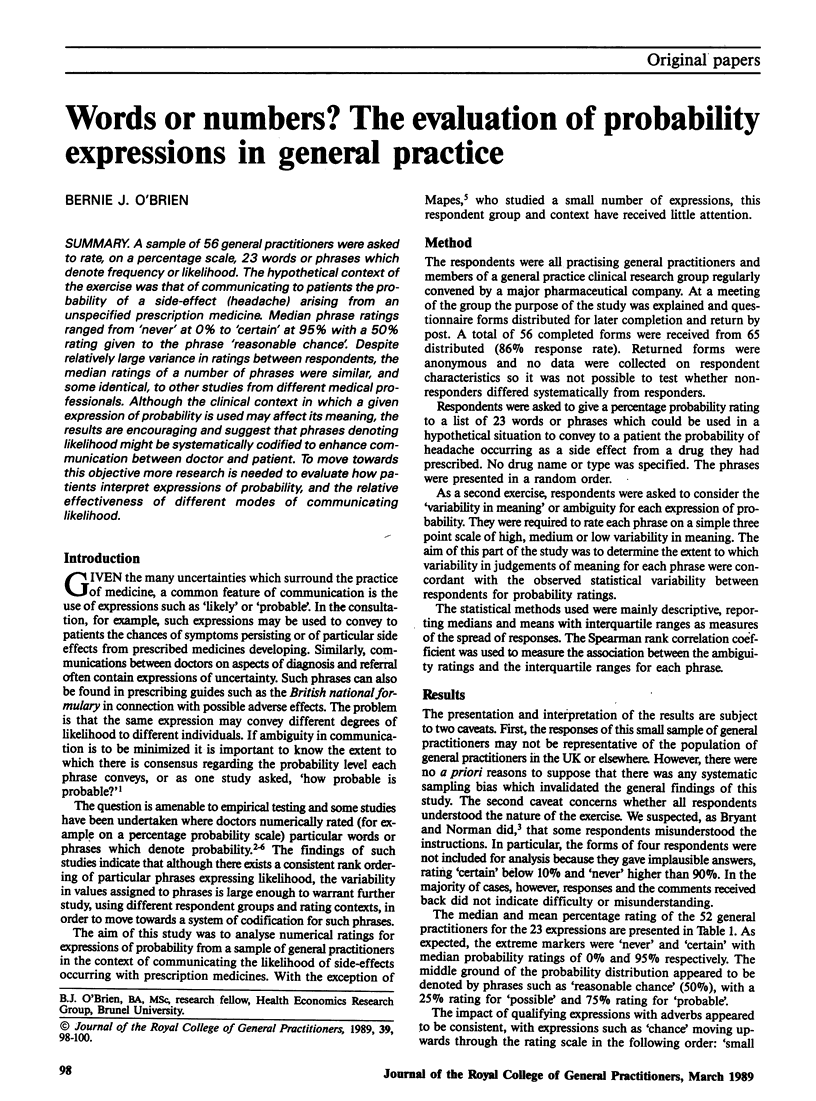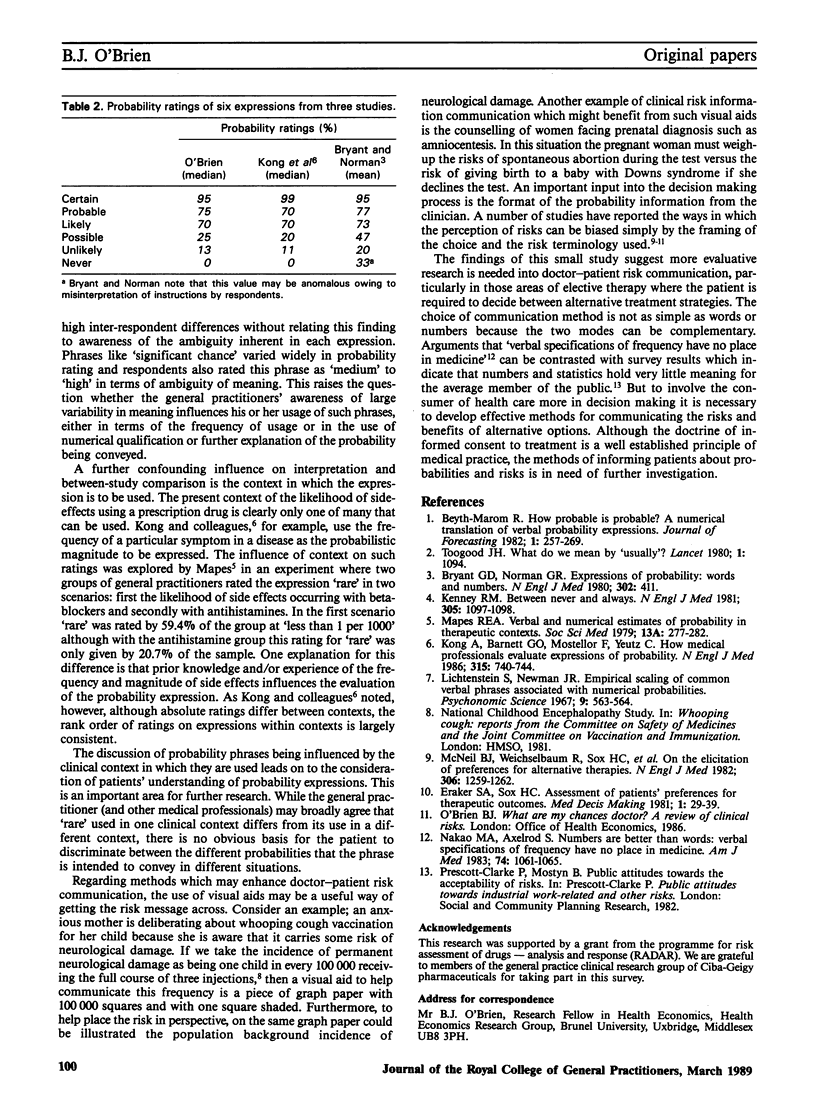Abstract
A sample of 56 general practitioners were asked to rate, on a percentage scale, 23 words or phrases which denote frequency or likelihood. The hypothetical context of the exercise was that of communicating to patients the probability of a side-effect (headache) arising from an unspecified prescription medicine. Median phrase ratings ranged from 'never' at 0% to 'certain' at 95% with a 50% rating given to the phrase 'reasonable chance'. Despite relatively large variance in ratings between respondents, the median ratings of a number of phrases were similar, and some identical, to other studies from different medical professionals. Although the clinical context in which a given expression of probability is used may affect its meaning, the results are encouraging and suggest that phrases denoting likelihood might be systematically codified to enhance communication between doctor and patient. To move towards this objective more research is needed to evaluate how patients interpret expressions of probability, and the relative effectiveness of different modes of communicating likelihood.
Full text
PDF


Selected References
These references are in PubMed. This may not be the complete list of references from this article.
- Bryant G. D., Norman G. R. Expressions of probability: words and numbers. N Engl J Med. 1980 Feb 14;302(7):411–411. doi: 10.1056/NEJM198002143020718. [DOI] [PubMed] [Google Scholar]
- Eraker S. A., Sox H. C., Jr Assessment of patients' preferences for therapeutic outcomes. Med Decis Making. 1981;1(1):29–39. doi: 10.1177/0272989X8100100105. [DOI] [PubMed] [Google Scholar]
- Kenney R. M. Between never and always. N Engl J Med. 1981 Oct 29;305(18):1097–1098. [PubMed] [Google Scholar]
- Kong A., Barnett G. O., Mosteller F., Youtz C. How medical professionals evaluate expressions of probability. N Engl J Med. 1986 Sep 18;315(12):740–744. doi: 10.1056/NEJM198609183151206. [DOI] [PubMed] [Google Scholar]
- Mapes R. E. Verbal and numerical estimates of probability in therapeutic contexts. Soc Sci Med. 1979 May;13A(3):277–282. [PubMed] [Google Scholar]
- McNeil B. J., Pauker S. G., Sox H. C., Jr, Tversky A. On the elicitation of preferences for alternative therapies. N Engl J Med. 1982 May 27;306(21):1259–1262. doi: 10.1056/NEJM198205273062103. [DOI] [PubMed] [Google Scholar]
- Nakao M. A., Axelrod S. Numbers are better than words. Verbal specifications of frequency have no place in medicine. Am J Med. 1983 Jun;74(6):1061–1065. doi: 10.1016/0002-9343(83)90819-7. [DOI] [PubMed] [Google Scholar]
- Toogood J. H. What do we mean by "usually"? Lancet. 1980 May 17;1(8177):1094–1094. doi: 10.1016/s0140-6736(80)91544-5. [DOI] [PubMed] [Google Scholar]


